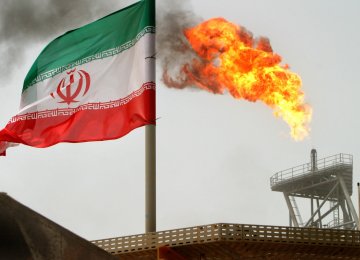February 10, 2017, marked the 38th anniversary of the Islamic Revolution —an epochal event that transformed Iranian economy dramatically.
Before the revolution, a considerable share of the population was living in poverty. In 1977, according to the World Bank, 46% of Iranians were living below the poverty line.
This figure has declined to 8% of people living on less than $2 a day in 2015, according to a report by the Persian daily Shahrvand citing the World Economic Forum.
Some of the countries with higher rates of poverty than Iran include Brazil (10.8%), Algeria (23.6%), India (68.7%), Pakistan (60.2%), Zambia (86.6%) and China (27.2%).
In 1960, agricultural products accounted for 29.1% of Iran’s gross domestic product. The contribution of agriculture sector to GDP growth fell to 1.9% in 1977.
Currently, close to 6 million hectares of land across the country are devoted to agriculture and local production meets over 90% of the domestic need for agricultural products.
A report by Food and Agriculture Organization says Iran is currently among the top 20 countries in terms of agricultural production.
According to the Ministry of Agriculture, production of agricultural products has grown threefold since the 1979 Islamic Revolution to stand at 13 million tons per annum now.
Rice production, for instance, has posted a 52% rise following the revolution and the rise in imports of red meat, chicken, eggs and milk has been kept in check.
At present, Iran is the leading producer of pistachio, saffron and pomegranates.
During 1977-78, the country imported over 5.6 million tons of wheat every year, but the country has achieved self-sufficiency by producing 14.5 million tons of this strategic crop annually.
There were 19 storage dams with a combined capacity of 13 billion cubic meter of water before the revolution. In the years following 1979 to February 2017, the number of dams reached 165 with a total capacity of 51 billion cubic meters.
Since the launch of the first rail project in Iran in 1912 until the revolution, 12 projects involving 4,676 kilometers of railroads (out of the total 10,171 kilometers until the Iranian year to March 2013) have been implemented across the country.
After a three-year hiatus during 1979-81, the country could add around 9,000 kilometers of railroads up until now. In other words, around 54% of Iran’s overall rail projects were completed after the revolution.
Progress in energy industry is arguably the biggest economic achievement of the Iranian revolution.
The country’s electricity production capacity has increased by 64,563 megawatts following the revolution. Iranian electricity subscribers were around 3.39 million in 1979 whereas the number increased to 31.7 million in the Iranian year to 2016.
Iran’s total power generation capacity was 7,600 megawatts in 1979. The figure now hovers around 76,000 megawatts, according to the Ministry of Energy.
The number of permits issued for industrial units has jumped by 3,499% since the revolution. The production of petrochemicals, steel and cement has risen by 2,675%, 4,468% and 830% respectively.
Aluminum output before the Islamic Revolution was about 0.36 million tons that has now reached 7.17 million tons per annum, registering a 1,927% growth.
The production of petrochemicals, for instance, increased from an annual 1.6 million tons in 1979 to 46.4 million tons in the Iranian year to March 2016, up 46-fold.






Add new comment
Read our comment policy before posting your viewpoints